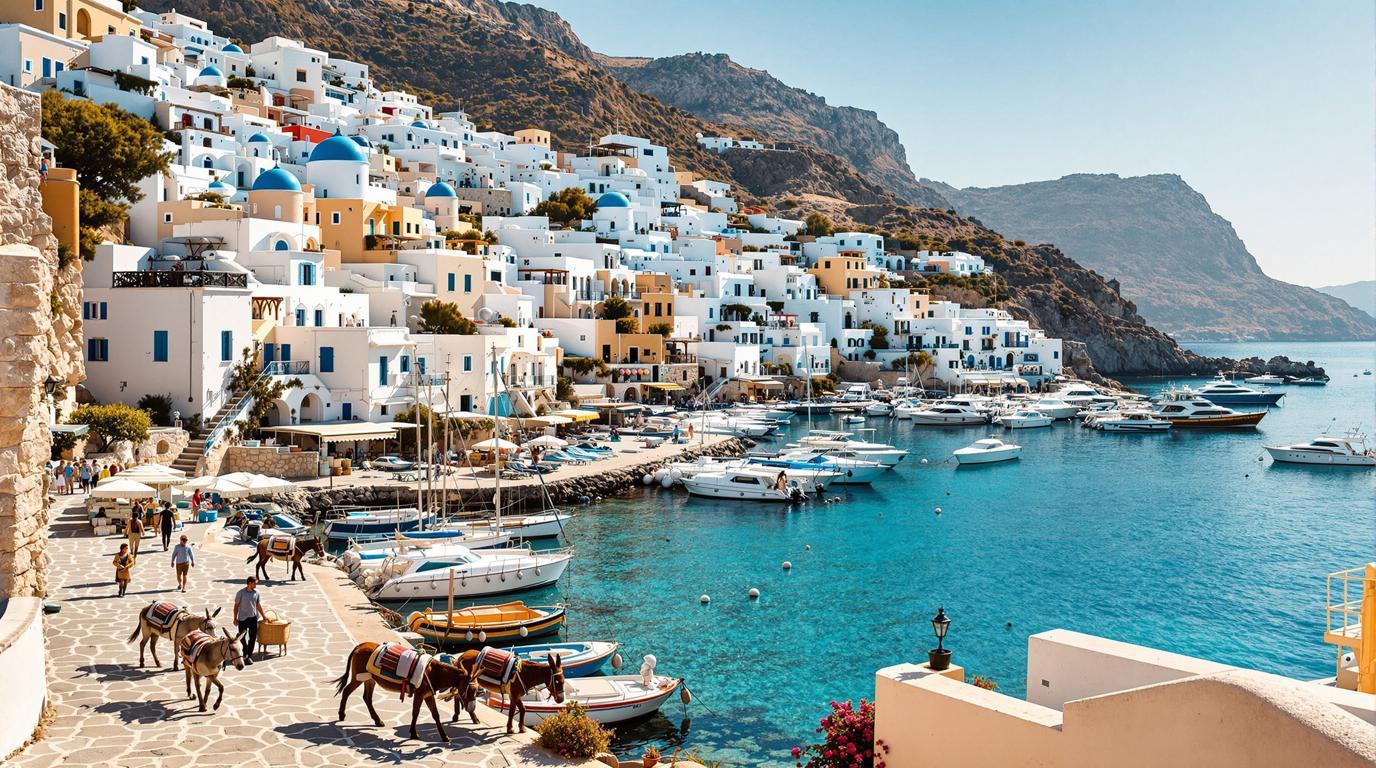I step off the ferry at Hydra’s horseshoe harbor, immediately struck by the conspicuous absence of engine noise. No cars, no scooters—just the gentle clop of donkey hooves on stone and the melodic Greek chatter flowing from waterfront tavernas. This tiny Saronic island, barely a two-hour journey from Athens, has preserved a Greece that elsewhere exists only in faded photographs and nostalgic stories.
Where time stands deliberately still in Greece’s artistic haven
Hydra’s stubborn refusal to modernize isn’t merely charming—it’s transformative. The island has maintained its car ban since the 1950s, creating an atmosphere that attracted artists and writers long before Instagram-seeking travelers arrived. Leonard Cohen purchased a home here in 1960 for just $1,500, finding inspiration in what he called “the most beautiful place in the world.”
“We don’t need cars to remind us we’re alive,” explains Dimitris, a leathery-skinned fisherman mending nets along the harbor wall. “The wind, the sea, and good conversation—these are Hydra’s true luxuries.” His weathered hands work methodically as fishing boats bob gently beside whitewashed buildings that climb the hillsides like scattered sugar cubes.
This fiercely protected timelessness has created a haven where well-heeled Athenians, international artists, and curious travelers converge in an atmosphere reminiscent of medieval villages where history feels touchably close.
Three secluded treasures beyond the harbor’s embrace
The abandoned lighthouse cove with turquoise secrets
Four kilometers east of Hydra Town, accessible only by boat or a challenging coastal path, lies Lighthouse Beach. Unlike other Mediterranean hidden coves, this crescent of smooth pebbles remains delightfully uncrowded even in August. The weathered 19th-century lighthouse stands sentinel above waters so impossibly clear you can count sea urchins fifteen feet below the surface.
I arrive by water taxi (€15 each way) and find just three other visitors—a French couple painting watercolors and a local man napping under a twisted pine tree. The silence is profound except for gentle wave rhythms against the shore.
The monastery path where wild herbs perfume the air
Beginning at the edge of Kamini village, a rough stone path climbs through fragrant thyme and oregano toward the 18th-century Monastery of St. Nicholas. Most visitors never venture beyond the first kilometer, missing the ancient stone shepherd’s hut that appears suddenly around a bend.
Inside its crumbling walls, cool darkness offers respite from the Mediterranean sun. The silence feels weighted with centuries of solitude, broken only by the distant tinkling of goat bells. From here, the monastery is another 20 minutes uphill, but the panoramic views across the Aegean’s watercolor blues justify every drop of perspiration.
Tasting Hydra’s soul in a grandmother’s kitchen
In the back streets behind the harbor, where bougainvillea cascades over high walls and cats doze in doorways, I discover To Steki tou Noni—”Grandfather’s Place.” This isn’t in guidebooks; I follow chalk-written directions from a shopkeeper who noticed my interest in authentic food.
Inside the stone-walled room with just six tables, Kyria Eleni serves hydriotiko kreas—slow-roasted goat with lemony potatoes, cooked in a clay pot according to her grandmother’s recipe. The meat falls apart at the touch of my fork, infused with thyme and garlic that perfumed her kitchen long before tourists discovered this island.
Essential wisdom for the Hydra-bound traveler
When to arrive for maximum magic
June and September offer the perfect balance of warmth and tranquility. Water temperatures remain inviting while accommodation prices drop by 30% compared to July-August peaks. Mid-week arrivals mean fewer Athenian weekenders competing for ferry tickets.
Navigating with ease
Water taxis become essential for exploring distant beaches—negotiate round-trip rates (typically €25-40) rather than one-way journeys. For inland exploration, comfortable walking shoes are non-negotiable; Hydra’s charming cobblestone streets become ankle-twisters in inappropriate footwear.
The island operates at a significantly higher price point than many Greek destinations, similar to other exclusive small islands. Budget at least €100 daily for modest comfort, though true budget travelers can find simpler accommodations in Kamini village for €70 nightly.
Departing with Hydra’s rhythm etched in memory
As my ferry pulls away from the harbor on my final evening, I watch Hydra’s honey-colored buildings glow in the sunset light. In just three days, I’ve unconsciously adopted the island’s unhurried cadence. Like most visitors, I arrived seeking pretty views but depart with something more valuable—a reminder that sometimes the most luxurious journey is simply slowing down enough to notice the world breathing around you.
